Better Suspension and Tires
You more than likely need to have an aggressive tire that does the job on highway, while at the same time off road, and that comes with some of the traction and durability features that an All Terrain or Mud Terrain tire usually does. You are not looking for the biggest tire, you are looking for a tire size close to stock, and which size is easily replaced south of the border if need be. Try finding a size 35” tire in Baja, good luck finding one at a llantera. Make sure you also carry a full size spare tire. I am currently running a 295/75/16 Nitto Terra Grappler AT which equals to 34 inches roughly.
Lifts should also be kept to a minimum, 2 “ – 3” is a good bet, for improving approach, break over and departure angles. The added clearance of a small lift, combined with the slightly bigger tire, will give you the extra clearance you may need to get over obstacles and thus avoid scraping or hitting key truck components under the truck. An Australian outfitter (OME) sells a combination of heavy duty coils and long travel shocks for a very reasonable price. It is also surprisingly easy to do one self, it was one of the first things I did to my vehicle, which is adding a 3” suspension lift by replacing the coil springs. Actually I helped my friend Jessie do the install and learned a lot myself that day. Adding the lift along with the long travel shocks took only a couple of hours.

Engine
Engine and drive train should be kept stock. There is no benefit to "high performance" exhausts or other engine components that can complicate things during routine maintenance or repairs. If you are mechanically inclined, you want to be able to tear down the engine in the field if necessary, and don't need anything that'll cause the engine to operate outside of OEM parameters. Adding a second battery in the engine bay is a popular modification on expedition vehicles. The benefits is that you reduce the possibility of getting stranded in the middle of nowhere because of a dead battery. By having a 2nd battery, you can flip a switch, which by passes the dead battery and start right up.
Armor Protection
Having a heavy duty bumper that can take a substantial impact force from a moving object is also a good idea. You also need to consider adding body armor to protect areas like body panels which can be very costly repair, and thus a pair of rock sliders can go a long way to adding protection to the vehicle’s body panels while at the same time, provide places to lift from with your high lift jack. Adding a skid plate is also a good idea, you don’t want to crack your center differential by accident when going over rocks. That would not be good. I replaced the land cruiser’s front bumper with a winch ready ARB front bull bar, and added a center differential skid plate, along with bolt on rock sliders.
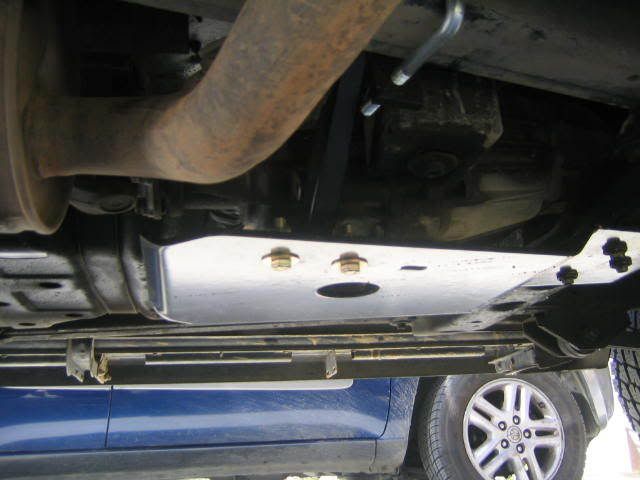

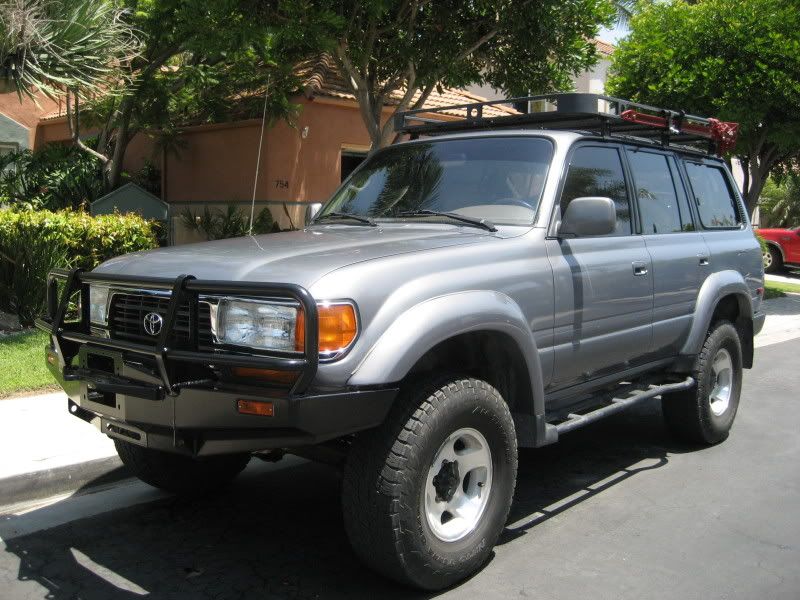
Storage Capacity
At some point you will have to consider how you are going to load up and haul your equipment and gear safely and securely. You will have to determine the best way to carry your camping equipment, recovery gear, tools, and key things like extra fuel and water. One popular way of adding capacity to your vehicle is by adding a qualify roof rack where you store items best suited to be carried outside the vehicle. By securing things properly on top of the roof rack, you can haul, your extra fuel and water for example in military style jerry cans, and bulky but light equipment like sleeping bags and tents, in addition to surf boards, wood, etc. My truck is equipped with a Conferr 4’ x 6’ full size rack, mated with a tough, durable poultry flooring for the floor board. I added mounting tabs so I can mount the highlift jack on the side of the roof rack, in addition to the shovel.

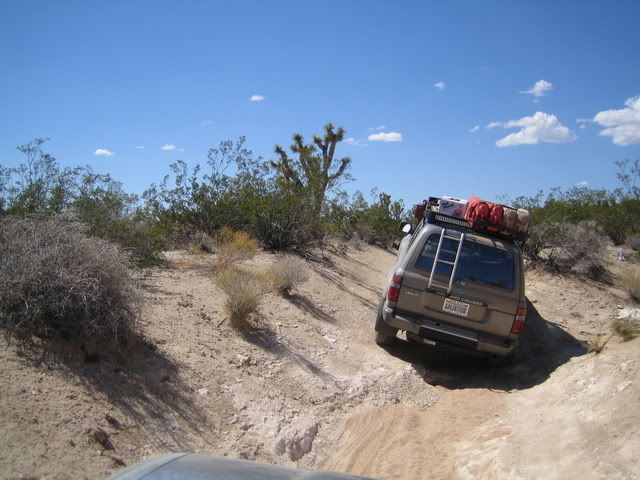
With the help of my buddy Marc, we also created a low cost but efficient storage system where I carry a list of tools, spare parts, and recovery gear, hidden from the naked eye.

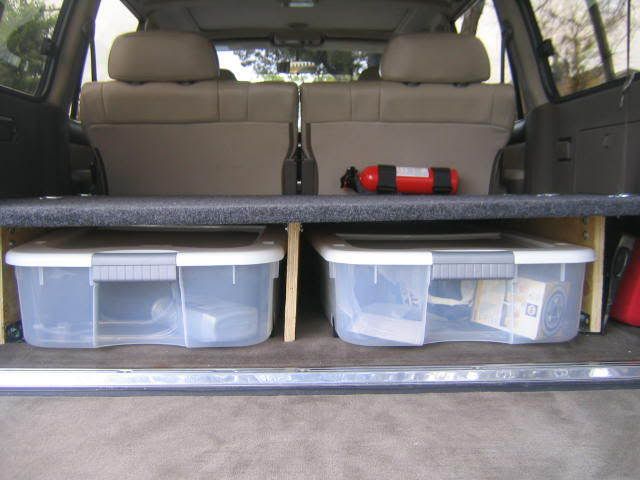
Lights and Electrical Accessories
Good driving lights are an absolute must. Good headlights, and a couple of off road lights in the front, will come in handy during night time adventures. Also adding a couple of lights to the back is another good idea when setting up base camp at night and to help you see more when backing up out of tough situations.
I went along and added a pair of the Kragen 7" HID Off Road lights to the ARB bumper. Easy install. Great light pattern and can't beat the price over the name brand HIDs, in spite of being made in China, the perceived quality is satisfactory, and the feed back has been positive from other users so far. I had the chance to try them out thru a couple of Joshua Tree's Berdoo Canyon night runs. I am very satisfied so far.

The stock incandescent light bulbs in the doors and interior get hot and draw quite a bit of current. This poses a risk of draining out the battery if someone leaves doors ajar while camping in a remote location. LED lights draw a fraction of current compared to incandescent lights and can be sourced pretty inexpensively over the internet.
One of 80 series shortcomings is the fact that it only comes with qty 1,12v receptacle. Not nearly enough to power the many electronics one may be using at a time: GPS, laptop, CB Radio etc. etc. Therefore adding more is a must.



Emergency and Recovery Gear
The items here are all critical and should be well thought out according to your vehicle and needs. Having the ability to increase the air pressure in your tires, after airing down when going off payment is important. I carry an inexpensive 12v power air compressor with enough ump to power up my tires within a reasonable amount of time. Make sure you have a good working fire extinguisher, along with a set of recovery gear items like a highlift jack, tree strap, chains, shackles, tow strap, a shovel, even an ax. You never know when you may need them, usually at the most inconvenient time. Extra engine and gear oil, along with a descent list of hand tools and wrenches is also important. It is also a good idea to having a list of spare parts like drive belts, along with cooling system hoses. Having the manufacturer’s repair manual is also a good idea.
Navigation and Communication
Know how to use a map and compass. Know how to operate a GPS as it is an invaluable tool for identifying your location at any given time. Have paper maps of the places you are going to visit. My vehicle is set up with a laptop mount so I can mount my lap top and sync it with my Garmin Etrex Vista gps for assisting me in planning my routes, as well as providing live navigation information on a large computer screen. It is something I recently have been exploring, and it came real handy during my last trip thru north Baja.
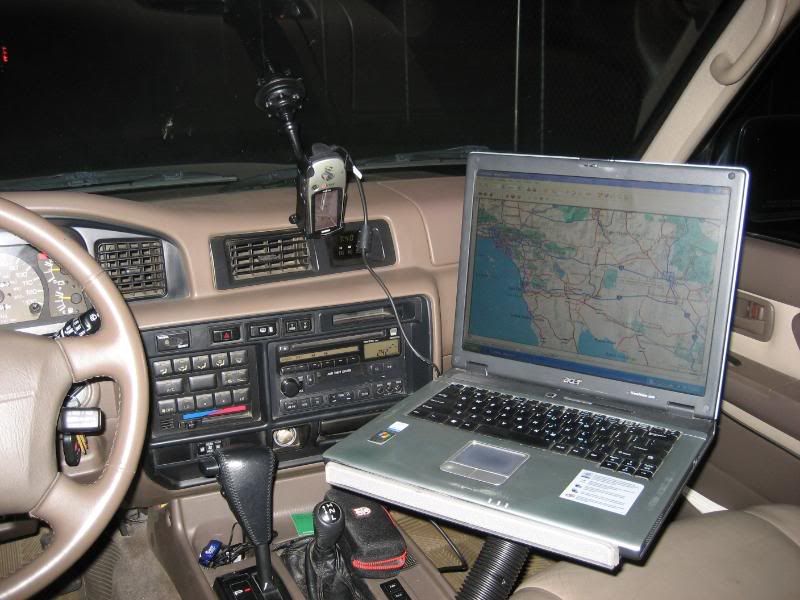
I also carry a portable CB radio with temporary mount CB antenna when riding along in a group, as it is a requirement to be able to communicate with others during back country adventures.
Additional Modifications
Diff & Gearbox breather extension
The Toyota differential breather hoses terminate too low on the body frame to provide enough protection during water crossings, which can lead to water and gear oil mixing up in your differentials, thus requiring draining and refilling of your differential gear oil after wards, as you do not want to be driving with water in your differentials for long periods of time. An easy modification can be done to resolve this by buying a few dollars worth of ID fuel line, some clamps and extending the differential breather hoses at a higher location inside the engine bay. Again, this is a required, cheap modification if you plan on doing the occasional creek and river water crossings during your back country adventures.

Extra Length Stainless Steel brake lines
Having longer travel shocks with the 3" suspension can cause the stock brake line to snap during full articulation. That would ruin any trail run. Longer brake lines address this issue.

Tire Carrier modified to the OEM rear bumper
I borrowed from a design off the internet to have a local fabricator build me a custom tire carrier that swings, and that fits on the existing rear bumper. It is a much more convenient way of carrying your spare tire, as having the spare tire in its original location under the rear of the land cruiser robs you of clearance, and increases the likelihood of puncturing your spare when going over rock obstacles.

Here you can see the carrier and the SUV canopy set up. the SUV canopy is a great camping accessory as it provides much needed shade out in the desert or at the beach.

Limb risers
The odd looking cables running from the front bumper to the roof rack are meant to divert large overgrown tree branches and shrubs off the vehicle’s windshield, and thus avoiding breakage. It is a very camel trophy thing to do, and a popular modification for expedition vehicles.

Security Alarm with a hidden kill switch
This is almost a must when traveling in Mexico. A descent alarm coupled with a hidden starter kill switch is a good theft prevention and deterrent. You don’t want to leave your vehicle unattended when going to a good local restaurant and being surprised that your vehicle was stolen. A kill switch and alarm adds extra piece of mind.
Future mods
Future mods will include a snorkel to minimize the effect of dust on the engine (reliability.) I also plan on adding an automatic rear locker (improved traction,) a winch (recovery,) adding dual batteries (recovery) and finish the list with a 12v fridge, so I never have to worry about keeping things cold or dealing with soggy food.
